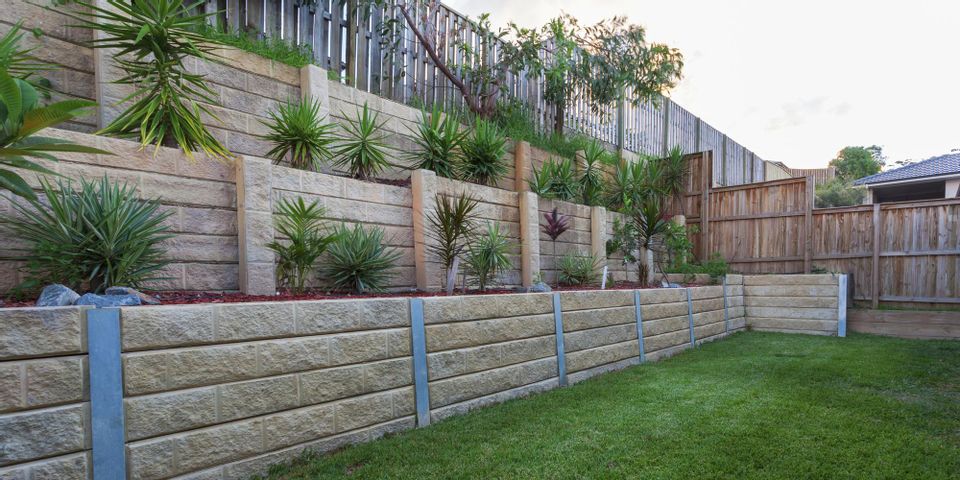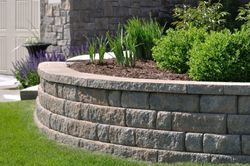
Designed to hold back soil and rocks and keep them from sliding, retaining walls are an attractive and practical way to prevent erosion and add to the beauty of landscaped yards. Comprised of masonry or a variety of construction materials, they can be used for many purposes. Learn more about them and their uses below.
A Brief Guide to Retaining Walls
1. Anchored
For stability and longevity, anchored retaining walls are secured at the top and bottom with cables or stays driven into the earth and commonly reinforced with concrete. The anchors provide added structural support, making anchored retaining walls an ideal choice for tall walls and those intended to withstand heavier loads.
2. Gravity
 Relying solely on its own weight to confine soil and earth, builders can construct gravity retaining walls from segmented blocks, bricks, stone, or pavers.
Relying solely on its own weight to confine soil and earth, builders can construct gravity retaining walls from segmented blocks, bricks, stone, or pavers.
An excellent choice for low-height walls tucked into tight spaces without room for excavation, gravity walls are durable and long-lasting. Also, they can be erected quickly and inexpensively.
3. Cantilevered Retaining Wall
Cantilevered walls operate on the principle of leverage, utilizing the weight of the backfill to give them stability and protection from sliding. To construct a wall of this type, builders drive the horizontal piece of an L- or T-shaped beam into the ground to connect a wall to a foundation.
Typically constructed of reinforced concrete on-site, or with prefabricated, precast concrete, cantilevered retaining walls can be built up to 30 feet high or in tiers.
If your yard could benefit from the addition of hardscape elements, contact the professionals at Lexington Cut Stone. Since 1921, their team of skilled contractors, architects, and landscaping specialists have assisted clients across central Kentucky create stone walls designed to enhance the natural beauty of their property. Contact them today at (859) 255-2496 to request a quote, or visit them online to learn more about their products and services.
About the Business
Have a question? Ask the experts!
Send your question

